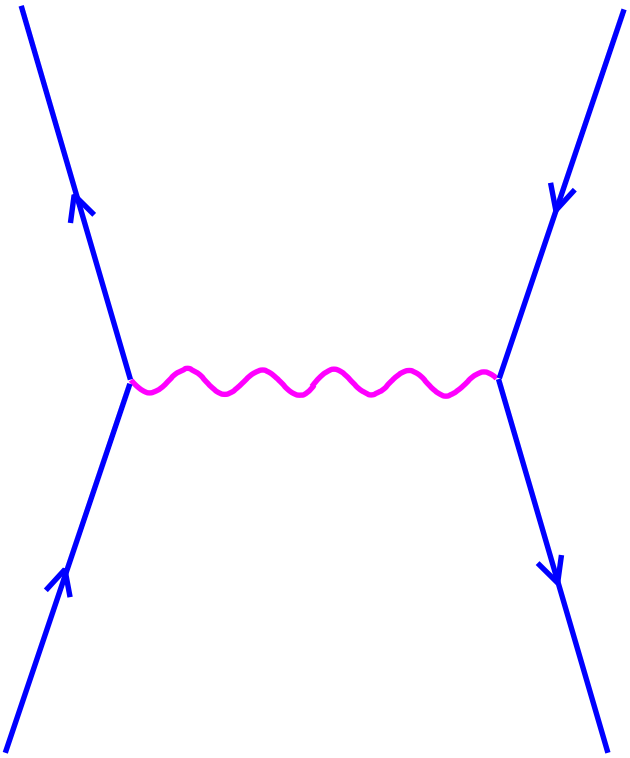Chiral Symmetry Breaking
![]()
Another emphasis of my research is an attempt to understand the pattern of fermion masses. An attractive possibility is that mass generation is dynamical, as happens in QCD. Such dynamical chiral symmetry breaking involves strong-coupling physics, so there are many open questions.
I have worked on the critical behavior of extended technicolor models. I derived an effective action for the low-energy degrees of freedom in a model in which a combination of gauge and four-fermion couplings is near a critical value for spontaneous chiral symmetry breaking. Previous work suggested that the resultant light scalar resonances can enhance fermion masses without violating bounds on flavor changing neutral currents. We estimated the width of these scalar resonances and found that they are extremely broad for realistic values of the gauge coupling.
In recent years, there has been a controversy over whether the chiral phase transition in 2+1 dimensional QED is first or second order. To resolve the issue, my collaborators and I calculated the fermion-antifermion scattering amplitude and located its poles. Since no pole goes to zero momentum at the transition point, we concluded that the transition is not second order. We have also extended our analysis to the zero temperature chiral phase transition in 3+1 dimensional SU(N) gauge theories, like QCD, where we found that there is a critical number of fermion flavors (near 4N) above which there is no chiral symmetry breaking. Again the phase transition is not second order.
Contact Info
John Terning, terning @ physics.ucdavis.edu
revised June '02
![]()
